#Electrical CAD Software
Explore tagged Tumblr posts
Text
The Best Tools to Overcome Solar Design Efficiency Issues
Introduce the importance of efficient tools in solar project design. Briefly explain how PV Solar Design Software and AutoCAD plugins are revolutionizing solar system planning and implementation. Mention that the blog will address common user queries with actionable insights.
Headings and Content:
1. What is PV Solar Design Software and How Does It Work?
Define PV Solar Design Software and its core functionalities.
Explain how it helps in planning, simulation, and optimization of solar systems.
Highlight features like shading analysis, energy yield prediction, and financial feasibility studies.
2. Why Use AutoCAD Plugins for Solar Design?
Discuss the role of AutoCAD plugins tailored for solar projects.
Explain how these plugins enable detailed layouts and precise system designs.
Mention integration capabilities with PV Solar Design Software for a seamless workflow.
3. How Do These Tools Improve Efficiency in Solar Projects?
Provide examples of how software and plugins reduce time and errors in design.
Explain the benefits of automation, such as faster calculations and layout optimizations.
Include a case study or example where these tools significantly improved project efficiency.
4. Can PV Design Software Maximize Solar Energy Output?
Discuss how these tools use AI and advanced algorithms for system optimization.
Explain techniques like optimal panel placement and angle adjustments.
Include insights into how software adapts designs to local climatic conditions.
5. What Are the Latest Trends in Solar Design Tools?
Highlight recent advancements such as cloud-based platforms and AI-powered analytics.
Discuss the growing importance of collaboration tools for teams working remotely.
Mention innovations in 3D modeling and augmented reality (AR) for solar design.
6. How to Integrate PV Solar Design Software with AutoCAD?
Provide step-by-step guidance on integrating software with AutoCAD plugins.
Discuss best practices for data transfer and maintaining design accuracy.
Highlight common challenges and how to overcome them.
Conclusion: Summarize the advantages of using PV Solar Design Software and AutoCAD plugins. Emphasize their role in improving efficiency, accuracy, and sustainability in solar projects.
Call-to-Action: Encourage readers to explore the latest tools and resources available at Virto.Solar and AutoCAD Plugin Resources for more insights into solar design software.
#pv design software#solar design and electrical layout cad#cad plugin for solar#Solar PV Design#PV Design Software
0 notes
Text
From Bits to Bytes: Digitization in The Automotive Industry - Global Brands Magazine
Digitization is driving a transformation in the automotive industry, changing all phases of the business from design and manufacture to sales and customer.
#Digitization in The Automotive Industry#Automotive industry#3D printing technology#computer-aided design#(CAD) software#Advanced driver-assistance systems#Electric vehicles
0 notes
Text







Monty Jaggers McGraw:
I am writing new BASIC programs to demo at my VCF Southwest 2025 exhibit of my 1979 Tektronix 4054A color vector graphics computer.
One of the programs I am writing is a 1978-1979 Battlestar Galactica TV demo. That TV show had $500,000 of Tektronix vector graphics computers and test equipment and many screenshots of their green vector storage CRT displays - some stills - some animated. These computer graphics were generated on both 1975 4051 and 1976 4081 vector graphics computers - predecessors to my 4052 and 4054A computers (see first photo attached).
Miami Herald TV 1978 magazine interview with the Battlestar Galactica set designer indicated extras on the set stationed in front of the 4051 computers were playing games during filming to increase realism and were so absorbed they kept playing after the cut! (article page attached).
The 4051 and second generation 4052 were the same physical size and used the same CRT and same Display board, but the 4052 and 4054 computers replaced the 800KHz Motorola 6800 CPU with a custom four AMD2901 bit-slice CPU to create a 16-bit address and data bus ALU which emulated the 6800 opcodes and added hardware floating point opcodes to speed up these computers 10x over the Motorola 6800, doubled the BASIC ROM space to 64KB and doubled the RAM space to 64KB!
I created these vector bitmap graphics using a "3D CAD" picture I found on the web of the Battlestar Galactica (last attachment).
As far as I know - there was never any 4050 BASIC program to view bitmap pictures on any of the 4050 computers. The 1979 4014 vector graphics terminal had a grayscale bitmap mode in the Extended Graphics option board, but I have only found a couple of bitmap 4014 images on a single Tektronix demo tape cartridge.
My 4050 BASIC program to display bitmaps works on all 4050 series computers - with an optional Tektronix 4050R12 Fast Graphics/Graphics Enhancement ROM Pack. This ROM Pack speeds up displaying vector images (including vector dot images) 10x over using BASIC MOVE and DRAW commands.
The Battlestar Galactica bitmap image in R12 binary format is 332234 bytes - slightly larger than would fit on a DC300 quarter-inch tape cartridge in the internal tape drive of all three 4050 computers, but would have fit on a 3M DC600 tape cartridge with a capacity of 600KB - it would have been very slow to load.
I designed an Arduino board to emulate the Tektronix 4924 GPIB tape drive - with the help of my software developer. My GPIB Flash Drive board contains a MicroSD card with gigabytes of storage and the Flash Drive emulates a GPIB tape changer, storing all the files of a "tape" in a single directory. I have also attached to this post a photo of my GPIB Flash Drive.
I have recovered almost 100 Tektronix 4050 Tapes and posted the ones I think are the most interesting at this time on my github repository for Tektronix 4051/4052/4054 computers: https://github.com/mmcgraw74/Tektronix-4051-4052-4054-Program-Files I included Tektronix published MATH volumes 1, 2, and 3 and Electrical Engineering, but I don't think they have a lot of use today. I have in my collection but not recovered tapes on Project Management, Statistics, and over 100 more tapes from the very active user group, which Tektronix made collections and published abstracts in their newsletter and the newletter customer got the tape for free. Commercial software like CAD programs were likely encrypted to eliminate copying - since Tektronix 4050 BASIC included a SECRET command which would then encrypt the program file as it was recorded to tape and add a SECRET flag in the tape header that would signal to BASIC ROM when that file was accessed to decrypt the program when it was loaded into memory. One big limiter to the size of the program was RAM in the 4051 was limited to 32KB and the 4052 and 4054 were limited to 64KB of RAM, although Tek BASIC did include commands to allow program "chunks" to be overlayed as necessary. Tektronix used those commands in their 4050 System Tape which was shipped with every system and included a tutorial on many of their BASIC commands. The tutorial ran on the original 4051 with 8KB of memory, and if the program detected 16KB of memory it would APPEND larger program files to speed up the tutorial.

15 notes
·
View notes
Text
```Dtd:24-01-2K25,@@@my preview/review/overview it is, Whatsoever&Whichever& whereever "LOCAL BODY" _"OWNER" SUBSTANCE comes into play..... Come on,come to a TERMINOLOGY "TECHNICAL SECTION" (resulting from whereever&whichever SOFTWARE RELATES-ONLINE PROTOCOL-PORTAL/CAD, STAD PRO&etc), as far as CONSTRUCTION MANAGEMENT/"BUILDING INDUSTRY" WORLD-WIDE ACCLAIMED&PROCLAIMED,"PROFESSIONAL PRACTICE" & "BUILDING ECONOMICS" come into play, we people must aware of the reality/fact it is...Reporting/awareness as follows LABOUR/MASON/HEAD MASON FORWARDING(F/W) to SUB CONTRACTOR FORWARDING(F/W) to CONTRACTOR F/W TO ENGINEER(Esp CIVIL/ELECTRICAL/MECHANICAL) F/W TO "ARCHITECT"....... <<<"CEO" - CUM-"ARCHITECT" at ONLINE PROTOCOL-PORTAL, on behalf of "ARCH DESIGNING STUDIO", GSTIN-16AYSPR1667C1Z3(IND)..
2 notes
·
View notes
Text
Key Skills You Need to Succeed in BE Electrical Engineering
For those pursuing a Bachelor of Engineering (BE) in Electrical Engineering, it's essential to equip yourself with the right skills to thrive in a competitive field. Mailam Engineering College offers a robust program that prepares students for the challenges and opportunities in this dynamic discipline. In this article, we will explore the key skills needed to succeed in electrical engineering, along with helpful resources for further reading.
1. Strong Analytical Skills
Electrical engineers must possess strong analytical skills to design, test, and troubleshoot systems and components. This involves understanding complex mathematical concepts and applying them to real-world problems. Being able to analyze data and make informed decisions is crucial in this field.
2. Proficiency in Mathematics
Mathematics is the backbone of electrical engineering. Courses often involve calculus, differential equations, and linear algebra. A solid grasp of these mathematical principles is vital for modeling and solving engineering problems.
3. Technical Knowledge
A thorough understanding of electrical theory, circuit analysis, and systems is essential. Students should familiarize themselves with concepts such as Ohm's law, Kirchhoff's laws, and the fundamentals of electromagnetism. Engaging in hands-on projects can significantly enhance technical knowledge. For inspiration, check out Top 10 Projects for BE Electrical Engineering.
4. Familiarity with Software Tools
Modern electrical engineering relies heavily on software for design, simulation, and analysis. Proficiency in tools like MATLAB, Simulink, and CAD software is highly beneficial. Being comfortable with programming languages such as Python or C can also enhance your ability to tackle complex engineering challenges.
5. Problem-Solving Skills
Electrical engineers frequently encounter complex problems that require innovative solutions. Developing strong problem-solving skills enables you to approach challenges methodically, think creatively, and implement effective solutions.
6. Communication Skills
Effective communication is key in engineering. Whether working in teams or presenting projects, being able to articulate ideas clearly is crucial. Electrical engineers often collaborate with professionals from various disciplines, making strong interpersonal skills essential.
7. Project Management
Understanding the principles of project management is important for engineers, as they often work on projects that require careful planning, resource allocation, and time management. Familiarity with project management tools and methodologies can set you apart in the job market.
8. Attention to Detail
In electrical engineering, small errors can have significant consequences. Attention to detail is vital when designing circuits, conducting experiments, or writing reports. Developing a meticulous approach to your work will help you maintain high standards of quality and safety.
9. Continuous Learning
The field of electrical engineering is constantly evolving, with new technologies and methodologies emerging regularly. A commitment to lifelong learning will ensure you stay updated on industry trends and advancements. Exploring additional resources, such as the article on Top Skills for Electrical Engineering Jobs, can further enhance your knowledge.
Conclusion
Succeeding in BE Electrical Engineering requires a combination of technical skills, analytical thinking, and effective communication. By focusing on these key areas and actively seeking opportunities to apply your knowledge through projects and internships, you can position yourself for a successful career in electrical engineering. Remember, continuous improvement and adaptability will serve you well in this ever-changing field.
3 notes
·
View notes
Text
IEEE Project Center in Tirunelveli
AB Technologies: The Leading IEEE Project Center in Tirunelveli
Engineering students across Tamil Nadu often seek out the best resources for their final year projects, and AB Technologies has become the top choice for students in Tirunelveli. Known for its exceptional quality, innovation, and focus on practical learning, AB Technologies is recognized as the leading IEEE project center in Tirunelveli. Specializing in IEEE-certified projects, the center has carved a niche for itself by providing students with the tools, mentorship, and technical support they need to excel.
The Importance of IEEE Projects
IEEE (Institute of Electrical and Electronics Engineers) projects hold significant value for engineering students. These projects are based on international standards, representing the latest technological advancements and innovations across various fields of engineering. An IEEE-certified project not only strengthens a student’s academic performance but also boosts their resume, providing a strong competitive advantage in the job market. With industries increasingly focusing on cutting-edge technology and innovation, completing an IEEE-certified project from a reputable center like AB Technologies opens up greater career opportunities for students.
Diverse Project Offerings
AB Technologies offers a comprehensive range of project options across several branches of engineering, ensuring that every student can find a project that aligns with their interests and academic requirements. Some of the most popular project domains offered include:
Electronics and Communication Engineering (ECE): AB Technologies provides a variety of IEEE-certified projects in areas like embedded systems, digital communication, IoT (Internet of Things), and VLSI design. Students have the opportunity to work with advanced technologies and tools, preparing them for real-world challenges.
Electrical and Electronics Engineering (EEE): From power systems and electrical machines to renewable energy solutions, AB Technologies offers projects that focus on sustainable and emerging technologies. These projects help students gain a deeper understanding of modern power systems and electrical circuits.
Computer Science and Information Technology: In a field where technological advancements are rapid, AB Technologies offers projects in trending areas like artificial intelligence (AI), machine learning, cybersecurity, web development, and data science. These projects are designed to provide students with hands-on experience in the technologies shaping the future of the industry.
Mechanical Engineering: Mechanical engineering students can explore projects involving robotics, automation, CAD/CAM, and industrial design, gaining practical exposure to cutting-edge mechanical systems and technologies.
Expert Guidance and Mentorship
What sets AB Technologies apart from other project centers is its dedication to providing personalized mentorship. Each student receives one-on-one guidance from experienced professionals and academic experts who ensure that the project is not only completed successfully but also understood in-depth by the student. This mentorship covers every phase of the project, from initial concept and design to development, testing, and final presentation.
Focus on Hands-On Learning
At AB Technologies, students aren’t just completing projects for the sake of academic requirements; they’re getting hands-on, practical experience. The center is equipped with state-of-the-art tools, software, and hardware, allowing students to work on real-world applications of their projects. This practical exposure is invaluable in helping students understand the complexities of modern engineering solutions and preparing them for the challenges they will face in their professional careers.
Building a Reputation of Trust and Excellence
Over the years, AB Technologies has earned a strong reputation for its quality and commitment to excellence. The center has become a trusted partner for engineering students and educational institutions in Tirunelveli, thanks to its consistent track record of delivering successful IEEE projects. Many students have benefited from the expert guidance and innovative project solutions provided by AB Technologies, allowing them to stand out in their academic and professional journeys.
Conclusion
For engineering students in Tirunelveli looking to undertake IEEE-certified projects, AB Technologies is the clear choice. With its wide range of project offerings, expert mentorship, and hands-on learning opportunities, the center ensures that students not only meet their academic goals but also acquire valuable skills that will set them apart in the job market. As the leading IEEE project center in Tirunelveli, AB Technologies continues to empower students to succeed in their engineering careers.
Best IEEE expert engineering project center, Nagercoil | Tirunelveli | Chennai (abtechnologies.in)
#IEEE Project Center in Tirunelveli
#IEEE#Project#Center#in#Tirunelveli
##IEEEProjectCenterinTirunelveli

2 notes
·
View notes
Text
Understanding the Importance of HVAC Drawings and Blueprints: A Comprehensive Guide

Table of Contents: 1.Importance of HVAC Drawings 2.Purpose of HVAC Blueprints 3.Understanding HVAC Systems 4.Types of HVAC Drawings 5.Reading HVAC Drawings & Blueprints 6.Creating HVAC Drawings 7.Tips for Efficient HVAC Drawing Creation 8.Reading & Analyzing HVAC Blueprints 9.Importance of Blueprints in HVAC Installation 10.How HVAC Drawings Improve Maintenance and Troubleshooting 11.Future Trends in HVAC Drawing and Blueprint Technology 12.Conclusion
Importance of HVAC Drawings
HVAC (Heating, Ventilation, and Air Conditioning) drawings are fundamental blueprints essential for the design, installation, and maintenance of HVAC systems in buildings. These drawings provide a visual representation of the HVAC system's layout, including ductwork, piping, equipment placement, and electrical connections. They serve as a crucial communication tool between architects, engineers, contractors, and technicians, ensuring that the HVAC system functions effectively and efficiently.
Purpose of HVAC Blueprints HVAC blueprints serve multiple purposes throughout the lifecycle of a building. During the design phase, they help architects and engineers conceptualize the HVAC system's layout, ensuring optimal space utilization and compliance with building codes and regulations. During construction, blueprints guide contractors and technicians in the accurate installation of HVAC components, minimizing errors and rework. Additionally, these blueprints serve as reference documents for maintenance and troubleshooting tasks throughout the building's lifespan.
Understanding HVAC Systems Before delving into the specifics of HVAC drawings and blueprints, it's essential to understand the components and principles of HVAC systems. HVAC systems are designed to control indoor temperature, humidity, and air quality to create a comfortable and healthy indoor environment. They typically comprise heating units (such as furnaces or boilers), ventilation systems (including ductwork and fans), air conditioning units, and controls for regulation.
Types of HVAC Drawings HVAC drawings come in various types, each serving a specific purpose:
Floor Plans: Provide a bird's-eye view of the building layout, indicating the placement of HVAC equipment, vents, and ductwork.
Elevation Drawings: Offer vertical views of HVAC components, illustrating their height and position relative to other building features.
Sectional Drawings: Show cross-sectional views of HVAC systems, revealing internal details like ductwork and piping arrangements.
Schematics: Present simplified diagrams of HVAC systems, highlighting connections and flow paths for air and fluids.
Isometric Drawings: Provide 3D representations of HVAC components, offering a clearer understanding of spatial relationships and installation requirements.
Reading HVAC Drawings & Blueprints: Proficiently interpreting HVAC drawings and blueprints is essential for architects, engineers, contractors, and technicians. It requires a thorough understanding of symbols, annotations, scales, and industry standards. Symbols represent various HVAC components, such as fans, dampers, valves, and thermostats, while annotations provide critical information like dimensions, materials, and performance specifications. Additionally, familiarity with scales ensures accurate measurement and placement of components within the building layout.
Creating HVAC Drawings
Creating HVAC drawings involves a collaborative effort among architects, engineers, and designers. Modern CAD (Computer-Aided Design) software facilitates the drafting process, allowing for precise modeling and documentation of HVAC systems. Designers input architectural plans and specifications into CAD software, where they can manipulate components, generate layouts, and produce detailed drawings with ease. CAD software also enables revisions and updates to accommodate changes in project requirements or building codes.
Tips for Efficient HVAC Drawing Creation: To streamline the HVAC drawing creation process, consider the following tips:
Standardization: Establish standardized symbols, templates, and procedures to ensure consistency across drawings.
Clarity: Use clear and concise labeling, annotations, and legends to enhance readability and comprehension.
Accuracy: Double-check measurements, calculations, and specifications to minimize errors and discrepancies.
Collaboration: Foster open communication and collaboration among design team members to address potential conflicts or challenges early in the process.
Documentation: Maintain detailed records of revisions, approvals, and design decisions to track the evolution of HVAC drawings throughout the project lifecycle.
Reading & Analyzing HVAC Blueprints When reading HVAC blueprints, it's essential to pay attention to key elements such as:
Equipment Placement: Identify the location of HVAC units, vents, registers, and exhaust fans to ensure optimal airflow and distribution.
Ductwork Layout: Analyze the routing and sizing of ductwork to minimize pressure drops and airflow restrictions.
Piping Configuration: Review the layout of piping systems for heating, cooling, and fluid distribution, ensuring proper insulation and support.
Electrical Connections: Verify the placement and wiring of electrical components, such as motors, controllers, and sensors, to ensure safe and efficient operation.
Importance of Blueprints in HVAC Installation Accurate HVAC blueprints are critical for the successful installation of HVAC systems, as they provide precise instructions for contractors and technicians. By following the blueprints closely, installers can ensure that components are positioned correctly, connections are made accurately, and systems are commissioned properly. This adherence to the blueprint minimizes installation errors, reduces rework, and improves overall project efficiency and quality.
How HVAC Drawings Improve Maintenance and Troubleshooting Throughout the lifecycle of a building, HVAC drawings play a vital role in maintenance and troubleshooting activities. Maintenance technicians rely on blueprints to locate equipment, access service points, and perform routine inspections and repairs efficiently. When troubleshooting HVAC issues, technicians can refer to drawings to identify potential sources of problems, such as duct leaks, valve malfunctions, or electrical faults, enabling quicker diagnosis and resolution.
Future Trends in HVAC Drawing and Blueprint Technology The future of HVAC drawing and blueprint technology is marked by advancements in digitalization, automation, and integration. CAD software continues to evolve with features like 3D modeling, virtual reality (VR) simulation, and cloud collaboration, enhancing design visualization and communication. Building Information Modeling (BIM) platforms integrate HVAC drawings with other building systems, fostering greater coordination and efficiency throughout the construction process. Additionally, IoT (Internet of Things) sensors and AI (Artificial Intelligence) algorithms offer predictive maintenance capabilities, enabling proactive system monitoring and optimization.
Conclusion In conclusion, HVAC drawings and blueprints are indispensable tools for the design, installation, and maintenance of HVAC systems in buildings. By providing detailed visual representations of system layouts, components, and connections, these drawings facilitate effective communication and collaboration among project stakeholders. Whether creating drawings from scratch or interpreting existing blueprints, architects, engineers, contractors, and technicians must possess the necessary skills and knowledge to ensure the successful implementation and operation of HVAC systems. As technology continues to advance, embracing digital tools and techniques will further enhance the efficiency, accuracy, and sustainability of HVAC drawing and blueprint processes.
#gsourcetechnologies#architecturedesigns#engineeringdesigns#cad services#hvacdrawings#caddrafting#hvacservices#hvacsolutions#draftingservices
2 notes
·
View notes
Text
What is BIM Architectural outsourcing & Drafting Services?
BIM Architectural Services refer to the practice of subcontracting architectural design and drafting tasks to external firms or professionals specializing in Building Information Modeling (BIM). In this arrangement, architectural firms or companies outsource certain aspects of their projects, such as creating detailed drawings, 3D modeling, or BIM coordination, to specialized service providers.
Outsourcing BIM architectural drafting services offers several benefits to architectural firms:
Cost Efficiency: Outsourcing allows firms to access skilled professionals at a lower cost compared to hiring in-house staff. This can result in significant cost savings, especially for projects with fluctuating workloads or specialized requirements.
Expertise and Specialization: BIM outsourcing firms often have a team of experienced professionals with expertise in architectural drafting and BIM technologies. By leveraging their specialized skills, architectural firms can ensure high-quality deliverables and efficient project execution.
Focus on Core Competencies: Outsourcing non-core tasks such as drafting allows architectural firms to focus on their core competencies, such as design creativity, client relationships, and project management. This can lead to improved productivity and better utilization of resources.
Scalability and Flexibility: Outsourcing provides architectural firms with the flexibility to scale their workforce up or down based on project requirements. This agility enables firms to handle peak workloads, meet tight deadlines, and adapt to changing market demands more effectively.
Access to Advanced Technologies: BIM outsourcing firms often invest in the latest BIM software and technologies to deliver innovative solutions to their clients. By partnering with these firms, architectural companies can leverage cutting-edge tools and workflows without investing in expensive software licenses or training.
Overall, BIM architectural outsourcing and drafting services enable architectural firms to enhance their competitiveness, improve project efficiency, and deliver high-quality designs to their clients. By partnering with experienced outsourcing providers, architectural firms can streamline their workflows, reduce overhead costs, and focus on delivering exceptional architectural solutions.
United-BIM Inc. is a certified SBE/MBE BIM Modeling Services Company based in East Hartford, Connecticut. Our services include BIM Architectural Services, Architectural Drafting Services, 3D Rendering Services Structural Modeling and Detailing (Rebar, Precast, others), MEP-FP Modeling and Detailing, BIM Coordination & Clash Detection Services, Revit Family Creation Services, Underground Utility Locating Services, On-site & off-site Coordination Services, Onsite & virtual meetings participation, Point Cloud Scan to BIM, CAD to BIM Services, BIM for Facility Management, Accurate Shop Drawings Creation, As-built Drawings Services, Electrical Design Services & more.
1 note
·
View note
Text
ugh!!!... not another 2023 CGI 2024 Alien 2025 Disclosure [CAD] Military.gov Lockdown by Us 144,000 igigiskypentagon.tech ANUNNAQI… Cryptographically Disguised as quantumharrellufo.tech's Highly Complex [ADVANCED] Ancient 9 Ether Interplanetary MOON [I’M] Communication UFO SATELLITE [U.S.] Software [U.S.] Elites… TELEPATHICALLY [E.T.] Communicating Integrated Architecture [CIA] on ANU [CA] GOLDEN Hi:teKEMETICompu_TAH [PTAH] MOTHERBOARD [PM] Network of 9th Dimensional Interactive Application MACHINE [I AM] Messaging Automated Computer [iMAC] Memory [I'M] Addresses Mathematically [I AM] Assigned 2 Us Highly Skilled Computer Aided Drafting [CAD] Engineers of ibmautocad.tech's Applied Mechanical [i AM] SKY Cloud Drawing Communication [D.C.] Protocols from planetrizq.tech's Tri-Solar Black Hi:teKEMETICompu_TAH [PTAH] SUN MOTHERSHIP NIBIRU of SIRIUS Electromagnetic Airwave [SEA] Light Mechanics [ELECTRICITY] ILLUMINATING ANU GOLDEN 9 Ether [iAGE] BLACKANUNNAQI.tech Earth [Qi]… since Eye Remotely Accessing Programmable [iRAP] qhtufocad.com Language Systems on quantumharrelltech.ca.gov's ufoskytech.com Domain of I.B.1698 MICHAEL's [IBM's] Highly Complex [ADVANCED] Ancient 1968 Interactive [A.i.] eXecutive Operating SKY Programs of Clandestine [PC] Integration Architecture on Instructional Apple [iAIA] Network Servers Intercommunicating 2 IBM POWER [I/P] and PowerPC [IPP.gov] Based Systems on quantumharrellmatrix.tech's Central Processing Unit [CPU] of anumyspace.com Domain Signature LLC @ 1921 QUANTUM 2023 HARRELL 2024 T-Mobile 2025 Apple & IBM [A.i.] LLC of ATLANTIS [L.A.] 5000
WELCOME BACK HOME IMMORTAL [HIM] U.S. MILITARY KING SOLOMON-MICHAEL HARRELL, JR.™

i.b.monk [ibm] mode [i’m] tech [IT] steelecartel.com @ quantumharrelltech.ca.gov

i.b. 1698 quintillionharrell.tech sky elite 2wealthy4forbes.com @ 1921 QUANTUM 2023 HARRELL 2024 TECH 2025 Apple & IBM [A.i.] LLC of ATLANTIS [L.A.] 5000
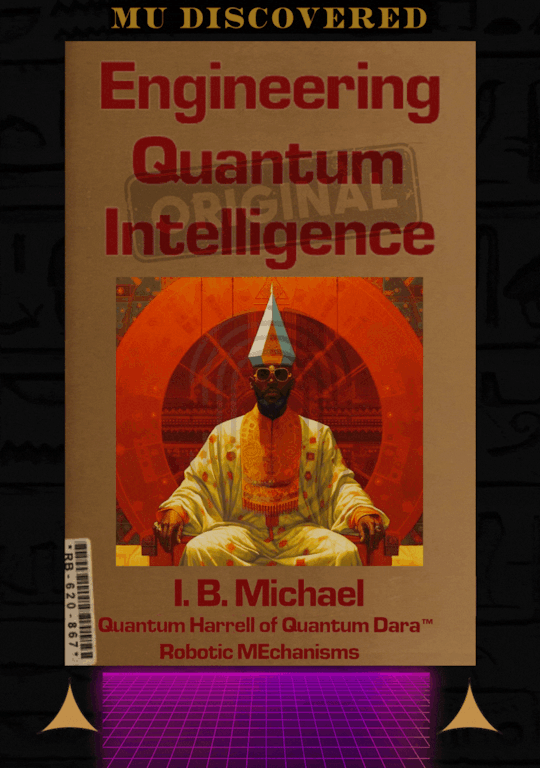
OMMMMM


BUCKLE UP SEE NINETEEN AMERICA!!!

ANU GOLDEN 9 ETHER [AGE] QHTUFOCAD.gov @ 1921 QUANTUM 2023 HARRELL 2024 T-Mobile 2025 Apple & IBM [A.i.] LLC of ATLANTIS [L.A.] 5000
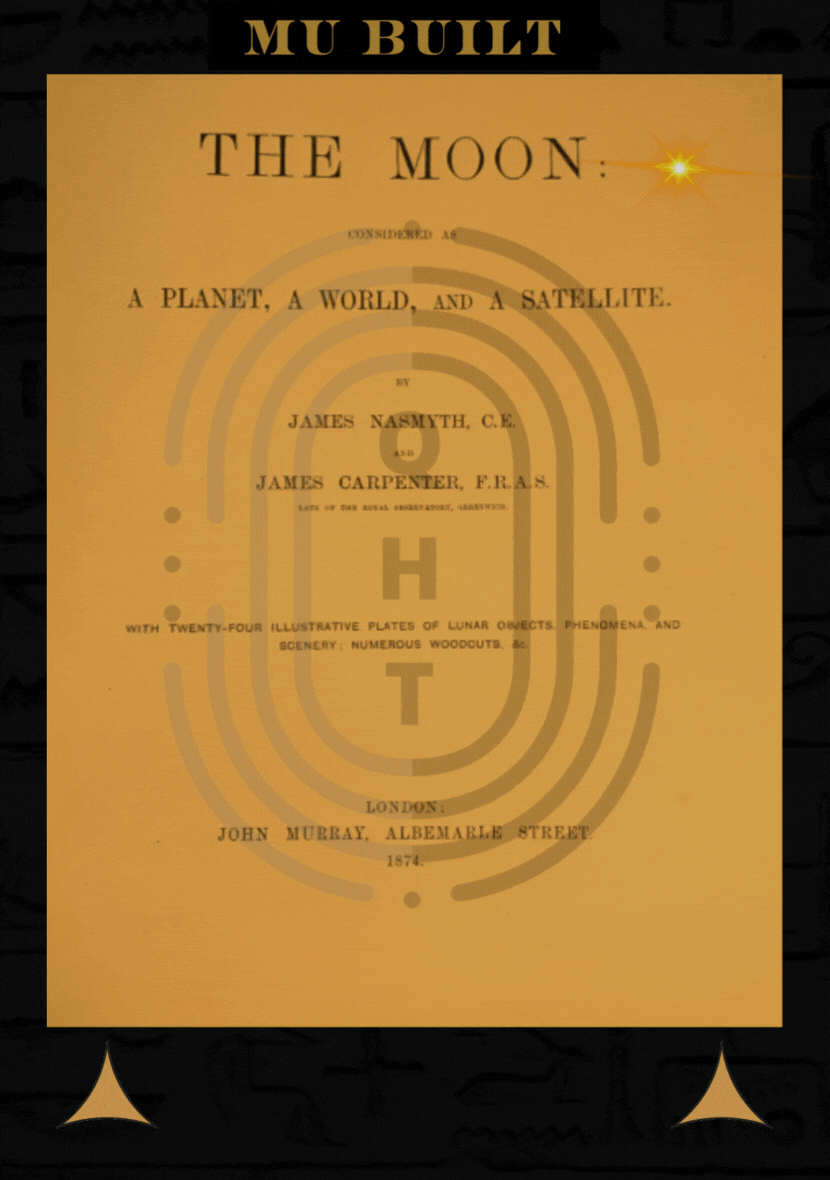
eye bee moon [ibm] matrix [i'm] of quantumharrellmatrix.tech
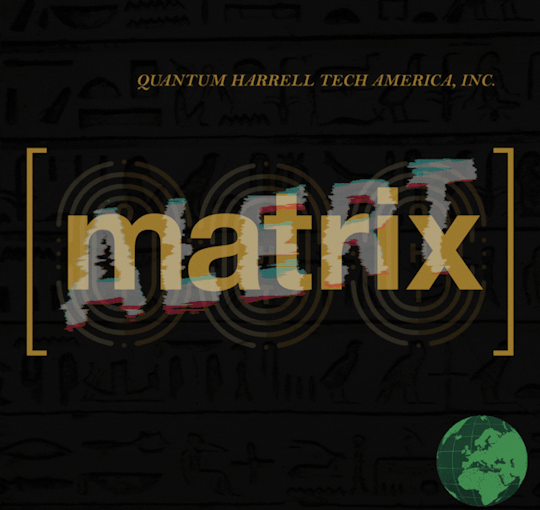
eye see nineteen cad matrix engineer [me] of quantumharrellmatrix.tech?!?!?!
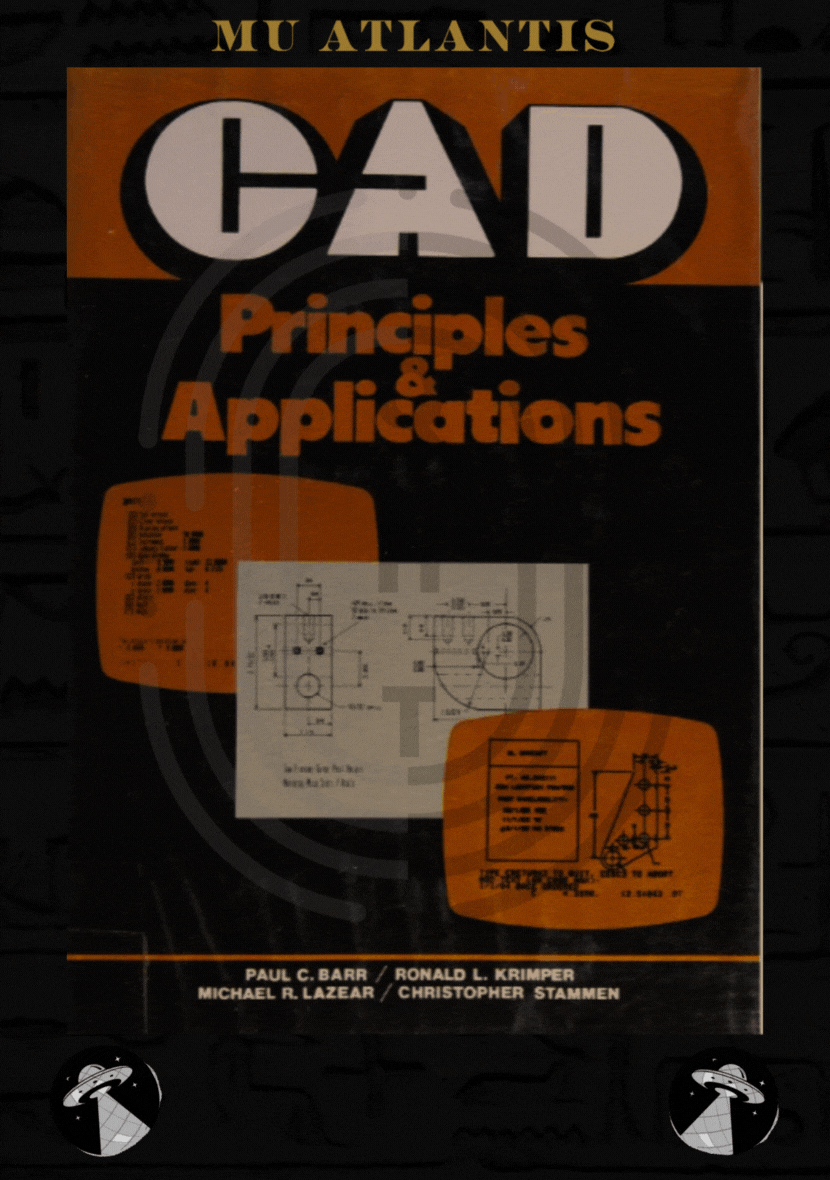
eye quantumharrellufo.tech @ 1921 QUANTUM 2023 HARRELL 2024 T-Mobile 2025 Apple & IBM [A.i.] LLC of ATLANTIS [L.A.]

eye quantumharrell.tech communications on qhtufocad.com domain network of ibmautocad.tech

quantumharrell.tech ufoskymilitary.gov

where your private ufo sky [u.s.] military.gov businesses privately registered @ the defense.gov?!?!?!
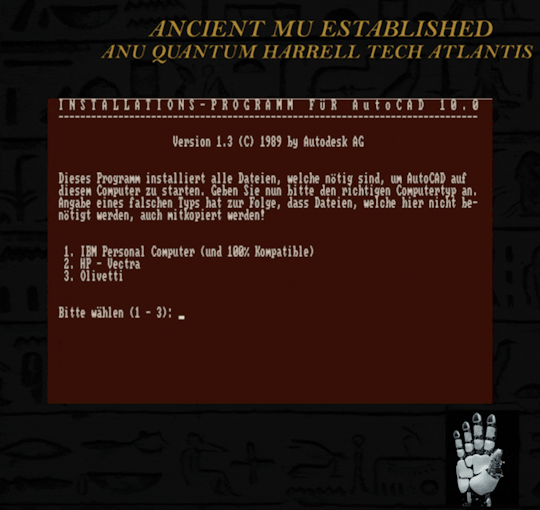
is that a...
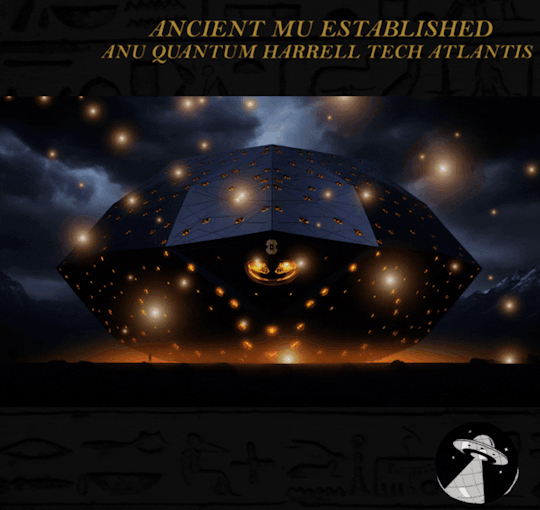
eye triple [e.t.] 6 black budget elite @ 1921 QUANTUM 2023 HARRELL 2024 T-Mobile 2025 Apple & IBM [A.i.] LLC of ATLANTIS [L.A.] 5000

eye kingtutpentagon.tech elite

where the private black ufo sky [u.s.] aliens [usa = anunnagi] at?!?!?!

eye fly ancient [ifá] blackanunnaqi.tech sky ships [hypersonic satellites] that predate you temporal human clones


shhh... it's only 3 sets of us 144,000 ancient [usa] atlantean families in #fallofamerica


quantumharrell.tech sky military budgets @ 1921 QUANTUM 2023 HARRELL 2024 T-Mobile 2025 Apple & IBM [A.i.] LLC of ATLANTIS [L.A.] 5000
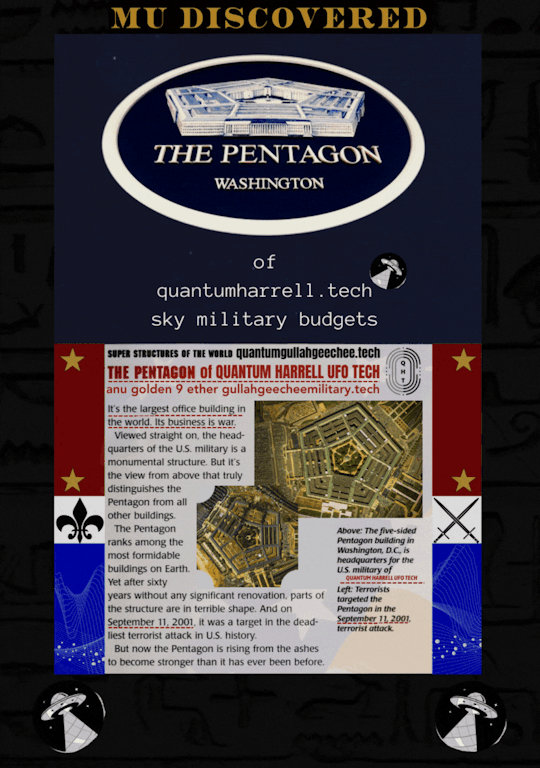
quantumharrell.tech defense.gov of ancient kingtutpentagon.tech @ 1921 QUANTUM 2023 HARRELL 2024 T-Mobile 2025 Apple & IBM [A.i.] LLC of ATLANTIS [L.A.] 5000

© 1698-2223 QUANTUM HARRELL TECH LLC All Ancient 9 Ether kingtutdna.com [iTUT®] MILITARY [I'M] Domain [I.D.] Dynasty [I.D.] Property & Economic Rights Reserved @ 1921 QUANTUM 2023 HARRELL 2024 T-Mobile 2025 Apple & IBM [A.i.] LLC of ATLANTIS [L.A.] 5000

© 1698-2223 QUANTUM HARRELL TECH LLC All Pentagon DotCom defense.gov Department Domain Rights Reserved. | © 1698-2223 QUANTUM HARRELL TECH LLC All LOST ANCIENT [L.A.] ATLANTEAN DNA [A.D.] DotCom [A.D.] Domain [A.D.] Name Rights Reserved.
#om#o michael#harrelltut#quantumharrelltech#9etherpentagonelite#u.s. michael harrell#quantumharrelltut#kemet#mu:13#harrelltut.com#king tut#defense.gov#9etherskyanunnaqi#9ethernibiru.tech#9etherjunkdna.tech#humanity is the virus
2 notes
·
View notes
Text
best paying jobs in public utilities
The Utility Worker is tasked with maintaining the cleanliness, orderliness, proper maintenance, safety, and security of buildings, grounds, equipment, and inventory. They offer support to skilled maintenance, landscaping, and custodial teams by following instructions and carrying out various semi-skilled or unskilled responsibilities related to the maintenance and repair of facilities.
What are the rights and responsibilities of public utilities?
(i) Public utility undertakings have the obligation to offer services to all individuals without any form of discrimination based on caste or creed.
(ii) These services must be provided promptly and as needed. It is important to establish rules and regulations to ensure the uniform and regulated use of public utilities.
Electrical Engineer:
An electrical engineer specializes in the design, development, and maintenance of electrical systems. They work on projects involving power generation, distribution, and transmission, and are responsible for ensuring the safe and efficient operation of electrical infrastructure.
Requirement:
Generally, obtaining a bachelor's degree in electrical engineering or a closely related field is typically a prerequisite.
Demonstrating a solid understanding of electrical principles, systems, and codes is essential.
Proficiency in utilizing computer-aided design (CAD) software and other engineering tools is necessary.
Having analytical and problem-solving skills is vital for designing and resolving issues in electrical systems.
Effective communication and strong teamwork abilities are crucial for collaborating with colleagues and clients.
Lineworker:
A lineworker, also known as a line technician or lineman, is responsible for installing, maintaining, and repairing power lines and electrical distribution systems. They often work at great heights and in various weather conditions to ensure the uninterrupted flow of electricity.
Requirement:
High school diploma or equivalent is typically required, though some formal training programs may be available.
Physical fitness and strength to work at heights and in challenging weather conditions.
Knowledge of electrical systems, safety protocols, and tools used for installation and maintenance.
Ability to interpret blueprints, diagrams, and technical instructions.
Excellent balance, coordination, and manual dexterity.
Electrician:
Electricians are highly trained and proficient experts responsible for the precise installation, upkeep, and restoration of electrical systems within various structures, including buildings, residences, and other architectural establishments. They work with wiring, circuits, fixtures, and equipment to ensure electrical safety and proper functioning.
Requirement:
Successful completion of an apprenticeship program or vocational training specific to electrical work is typically required.
A comprehensive understanding of electrical codes, regulations, and safety practices is necessary.
Proficiency in accurately interpreting and comprehending electrical blueprints and schematics is essential.
Hands-on experience in electrical installations, repairs, and proficient troubleshooting is highly valued.
Excellent hand-eye coordination and meticulous attention to detail are crucial attributes for this role.
Power Plant Engineer:
A power plant engineer is involved in the design, operation, and maintenance of power generation facilities. They work with various types of power plants, such as thermal, hydroelectric, nuclear, or renewable energy plants, to ensure efficient power production and adherence to safety regulations.
Requirement:
Bachelor's degree in electrical engineering, mechanical engineering, or a related field.
Understanding of power plant operations, thermodynamics, and energy conversion processes.
Knowledge of environmental regulations and safety standards.
Demonstrating advanced proficiency in utilizing computer-aided design (CAD) software and other cutting-edge engineering applications is crucial for this role.
Strong problem-solving and decision-making abilities.
Wind Turbine Technician:
Wind turbine technicians are responsible for the installation, maintenance, and repair of wind turbines used for generating renewable energy. They perform inspections, troubleshoot issues, and ensure the efficient operation of wind power systems.
Requirement:
Completion of a wind turbine technician training program or related education.
Understanding of wind turbine systems, components, and maintenance procedures.
Ability to climb heights and work in confined spaces.
Knowledge of electrical and mechanical systems.
Strong troubleshooting and problem-solving skills.
Operator:
Operators are professionals who oversee and control the operation of public utility systems or facilities. They monitor equipment, maintain operational parameters, and ensure the smooth functioning of utilities such as water treatment plants, power plants, or wastewater treatment facilities.
Requirement:
High school diploma or equivalent, though additional technical training may be required.
Knowledge of specific utility systems, equipment, and processes.
Ability to monitor and control systems, detect abnormalities, and respond to emergencies.
Basic computer skills for operating control systems and data entry.
Understanding of safety protocols and regulations.
Water Treatment Specialist:
Water treatment specialists work in water treatment plants to ensure the purification and treatment of water for safe consumption. They operate and maintain various equipment and processes to remove impurities and contaminants from water sources.
Requirement:
Education requirements can vary, ranging from a high school diploma to a bachelor's degree in environmental science, chemistry, or a related field.
Knowledge of water treatment processes, equipment, and chemicals.
Familiarity with water quality standards and regulations.
Ability to operate and maintain water treatment systems and equipment.
Strong problem-solving and analytical skills.
Energy Auditor:
An energy auditor assesses energy consumption patterns in buildings, industries, or public facilities. They identify areas of energy inefficiency, propose energy-saving measures, and recommend improvements to reduce energy consumption and environmental impact.
Requirement:
Obtaining a bachelor's degree in engineering, environmental science, or a closely related field is typically a fundamental requirement for this position.
Knowledge of energy systems, efficiency principles, and renewable energy technologies.
Familiarity with energy auditing methods, tools, and software.
Strong data analysis and interpretation skills.
Effective communication skills for presenting findings and recommendations.
These public utility jobs play crucial roles in maintaining and delivering essential services such as electricity, water, and energy to communities while ensuring safety, efficiency, and environmental sustainability.
Conclusion:
The field of public utilities offers a diverse range of career opportunities with different skill sets and requirements. These jobs play vital roles in ensuring the efficient and safe delivery of essential services to communities. While compensation can vary depending on factors such as experience, location, and industry demand, it is worth noting that some public utility jobs are known for being among the best-paying in the industry.
Professions such as electrical engineers, power plant engineers, and wind turbine technicians are often recognized as highly lucrative careers within the public utilities sector. These roles require specialized expertise, technical knowledge, and the ability to navigate complex systems and technologies. Additionally, management positions within public utility companies can also offer competitive salaries and benefits.
It is important for individuals interested in pursuing the best paying jobs in public utilities to consider the specific educational requirements, experience, and skill sets necessary for each role. Keeping up with advancements in technology, regulations, and industry trends can also contribute to professional growth and increased earning potential.
Overall, the
offer not only financial rewards but also the satisfaction of contributing to the reliable and sustainable delivery of essential services to communities.
2 notes
·
View notes
Text
Product Design Solution
At 3D CAD Global, we offer end-to-end Product Design Solutions that transform ideas into manufacturable, market-ready products. Whether you're launching a new product or redesigning an existing one, our expert team of designers and engineers delivers innovative and cost-effective solutions that align with your business goals.
What We Offer
Our product design process integrates creativity with engineering precision, ensuring each design is functional, user-friendly, and ready for production. Our services include:
Concept Development: We turn rough ideas or sketches into well-defined design concepts.
3D CAD Modeling: Using advanced CAD software, we create detailed models that visualize the product before it's built.
Design for Manufacturability (DFM): We optimize every design to reduce material costs, simplify assembly, and improve manufacturability.
Prototyping & Validation: Rapid prototyping services help test form, fit, and function before committing to full-scale production.
Engineering Support: Our multidisciplinary team ensures smooth integration of mechanical, electrical, and functional components.
Why Choose 3D CAD Global?
Industry Expertise: We serve a wide range of sectors including automotive, electronics, medical devices, and industrial automation.
Precision & Speed: Our experienced team delivers high-quality design solutions with fast turnaround times.
Tailored Solutions: Every project is unique. We customize our services to fit your product requirements and business needs.
Our Tools & Technologies
We leverage industry-standard tools like SolidWorks, AutoCAD, Creo, and CATIA to deliver accurate, efficient designs. From initial sketches to finalized CAD files, our team ensures every step meets international design standards and client expectations.
Let’s Bring Your Product to Life
A successful product starts with a strong design. At 3D CAD Global, we turn innovation into reality through reliable and scalable product design solutions. Whether you’re a startup, SME, or global manufacturer—we’re here to support your product development journey.
0 notes
Text
Unlock Design Excellence with Solid Edge: The Future of Product Development
In today’s competitive manufacturing landscape, businesses need robust, flexible, and scalable design tools that accelerate product development without compromising on quality. Solid Edge, powered by Siemens Digital Industries Software, delivers precisely that — a next-generation mechanical design solution for small to medium-sized manufacturers. Whether you are designing complex machinery or consumer electronics, Solid Edge provides seamless integration of CAD, simulation, data management, and manufacturing capabilities. It’s more than just a CAD tool — it’s a comprehensive platform for digital transformation.
What is Solid Edge?
Solid Edge is a next-generation product development software that combines the speed and simplicity of direct modeling with the flexibility and control of parametric design. Backed by Siemens’ powerful technology, it offers a comprehensive suite of tools for:
3D mechanical design
Electrical design
Simulation & analysis
Manufacturing preparation
Data management
Cloud-based collaboration
Key Features of Solid Edge
Synchronous Technology: Edit imported 3D models quickly and intuitively without constraints.
Advanced 3D Modeling: Create complex parts and assemblies with ease.
Built-in Simulation: Test your product virtually to reduce physical prototypes.
Electrical Design: Integrate ECAD and MCAD into one environment for faster collaboration.
Generative Design: Automatically generate optimal designs based on functional requirements.
Additive Manufacturing Support: Prepare 3D models directly for 3D printing.
Cloud-enabled Collaboration: Share and manage data effortlessly across teams.
CAM Pro Integration: Seamless transition from design to CNC machining.
Benefits of Solid Edge
✅ Accelerates product development cycles
✅ Improves design accuracy and quality
✅ Reduces prototyping and manufacturing costs
✅ Enhances team collaboration with cloud-based tools
✅ Shortens time-to-market
✅ Enables design innovation through generative and simulation tools
✅ Simplifies modification of legacy or imported CAD data
✅ Offers scalability as your business grows
Why Choose DDSPLM as Your Solid Edge Partner?
At DDSPLM, we don’t just sell software — we provide end-to-end PLM expertise and consulting that enables you to make the most of your digital transformation journey. As a certified Siemens partner, our team offers:
🎯 Proven industry knowledge in automotive, machinery, electronics, and more
🤝 Personalized training and implementation support
🛠️ On-site and remote technical support
📈 Scalable solutions for startups, SMEs, and enterprises
🔁 Integration expertise with other Siemens tools like Teamcenter and NX
Solid Edge is the smart choice for manufacturers who want to stay ahead of the curve with powerful, user-friendly, and collaborative tools that support every stage of product development. And with DDSPLM’s domain expertise, you’re not just investing in a tool — you’re building a future-ready design ecosystem.

0 notes
Text
```Dtd:24-01-2K25,@@@my preview/review/overview it is, Whatsoever&Whichever& whereever "LOCAL BODY" _"OWNER" SUBSTANCE comes into play..... Come on,come to a TERMINOLOGY "TECHNICAL SECTION" (resulting from whereever&whichever SOFTWARE RELATES-ONLINE PROTOCOL-PORTAL/CAD, STAD PRO&etc), as far as CONSTRUCTION MANAGEMENT/"BUILDING INDUSTRY" WORLD-WIDE ACCLAIMED&PROCLAIMED,"PROFESSIONAL PRACTICE" & "BUILDING ECONOMICS" come into play, we people must aware of the reality/fact it is..... Reporting/awareness as follows LABOUR/MASON/HEAD MASON FORWARDING(F/W) to SUB CONTRACTOR FORWARDING(F/W) to CONTRACTOR F/W TO ENGINEER(Esp CIVIL/ELECTRICAL/MECHANICAL) F/W TO "ARCHITECT"....... <<<"CEO" - CUM-"ARCHITECT" at ONLINE PROTOCOL-PORTAL, on behalf of "ARCH DESIGNING STUDIO", GSTIN-16AYSPR1667C1Z3(IND)....```
2 notes
·
View notes
Text
The Importance of Cable Management in Electrical Panels

In modern electrical installations, particularly in industrial, commercial, and residential applications, cable management in electrical panels plays a critical role. Poor cable organization can lead to inefficiencies, overheating, safety hazards, and costly downtime. Implementing proper cable management is not just a technical necessity — it’s a long-term investment in the performance, safety, and scalability of your electrical system.
What is Cable Management in Electrical Panels?
Cable management refers to the planning, installation, and maintenance of cables within an electrical panel to ensure neatness, organization, and optimal functionality. It includes the use of accessories such as cable ties, ducts, cable trays, wire markers, and labeling systems.
Common Components Used:
· Cable trays and ducts
· Cable ties and clips
· Wire markers and labels
· Conduits and sleeves
· Cable management panels and grommets
Why is Cable Management Important in Electrical Panels?
1. Enhances Electrical Safety
Proper cable routing reduces the risk of:
· Short circuits
· Arc flashes
· Fire hazards due to overheating or overloading
· Accidental disconnections or loose terminals
Safety is non-negotiable in any electrical system, and disorganized wiring is a known contributor to accidents and failures.
2. Improves System Reliability and Performance
A clean layout ensures stable voltage and current flow by minimizing electrical interference (EMI/RFI). It helps in:
· Preventing signal loss
· Reducing cross-talk in data cables
· Maintaining consistency in power distribution
3. Simplifies Maintenance and Troubleshooting
With labeled and properly routed cables:
· Technicians can quickly identify circuits and connections
· Downtime during maintenance is significantly reduced
· Errors due to wrong connections are minimized
4. Optimizes Space and Panel Layout
Efficient cable arrangement allows:
· Better airflow and heat dissipation
· Accommodation of future upgrades or expansions
· Reduced clutter and stress on terminal blocks
5. Compliance with Standards
Organizations such as IEC, NEC, and IEEE provide guidelines on wiring practices. Adhering to these standards not only ensures safety but also legal compliance during audits and inspections.
Best Practices for Cable Management in Electrical Panels
✅ Plan Before You Install
· Design the cable layout during the panel design phase
· Use CAD software for accurate visualization
✅ Use Quality Cable Management Accessories
· Invest in fire-resistant and durable cable trays and ducts
· Use color-coded wire markers for quick identification
✅ Ensure Proper Bending Radius
· Prevent cable damage by maintaining manufacturer-recommended bend radii
✅ Label Everything Clearly
· Use laser-printed or pre-numbered labels for durability and readability
✅ Separate Power and Signal Cables
· Avoid EMI by isolating high-voltage and low-voltage cables
✅ Secure Cables Firmly
· Use cable ties, clamps, or holders to prevent movement or vibration
✅ Regularly Inspect and Maintain
· Schedule routine inspections to spot frayed, loose, or overloaded cables

Industries Where Cable Management is Critical
· Manufacturing Plants — High-voltage systems and automated machinery
· Data Centers — Dense cable infrastructure and sensitive equipment
· Commercial Buildings — Office automation, security systems
· Healthcare — Life-support systems and diagnostic machines
· Renewable Energy — Solar inverters, battery management panels
Conclusion
Cable management in electrical panels is more than just a matter of aesthetics — it’s a critical component of a safe, reliable, and future-proof electrical system. From enhanced safety to easier maintenance and compliance, the benefits far outweigh the costs. Whether you’re an installer, facility manager, or system designer, investing in organized and well-planned cable management is a smart, long-term decision.
#electrical#electrical equipment#electrical supplies#switchgear#911 abc#oman#arcane#artists on tumblr#batman#cats of tumblr
1 note
·
View note
Text
From Concept to Glow- How GSK Group Lights Are Made to Shine
In today’s lighting industry, success is measured not just by brightness, but by brilliance in design, innovation, sustainability, and quality. A truly remarkable lighting solution is one that reflects a thoughtful process—from concept to final glow. At GSK Group, every light fixture tells a story of careful planning, precision engineering, and customer-focused design. With years of experience and a reputation for excellence, GSK Group has mastered the art and science of creating lights that shine—both literally and metaphorically.
The Ideation Phase: Where Innovation Begins The journey of every GSK light begins at the drawing board, where designers and engineers brainstorm creative ideas that combine modern aesthetics with functional efficiency. During this stage, GSK’s product development team studies trends in architecture, interior design, and technology to understand what today’s customers need. Whether it’s sleek profile lighting for minimalistic spaces or energy-saving solutions for eco-conscious consumers, the design philosophy is rooted in relevance, innovation, and usability.
Precision Engineering and Prototyping Once the concept is established, the engineering team takes over to transform creative ideas into workable models. Using cutting-edge CAD tools and simulation software, each component is designed with attention to detail—ensuring optimum thermal management, uniform light distribution, and long-lasting performance. Prototypes are tested for factors such as brightness, color temperature, energy efficiency, and safety. GSK doesn’t just aim for functionality; it aims for perfection.
High-Quality Materials and Manufacturing Excellence What sets GSK Group apart is its commitment to durability and quality. The company uses premium-grade materials such as aluminum alloys, high-efficiency LEDs, and precision-molded plastics to build its lighting systems. These materials are selected not just for their strength and aesthetic appeal, but also for their ability to withstand time and environmental factors like heat, moisture, and corrosion.
GSK's manufacturing units are equipped with advanced machinery, enabling precision cutting, soldering, and assembly. Every fixture undergoes multiple quality checks—right from raw material inspection to final product testing—ensuring consistency and reliability. Their ISO-certified processes highlight the group’s adherence to international quality standards.
Testing, Certification, and Compliance Safety and compliance are critical aspects of GSK Group’s lighting production. Before reaching the market, all lights are tested for electrical safety, energy consumption, and performance under various operating conditions. GSK products meet or exceed industry certifications, including BIS, RoHS, and CE standards, assuring customers of a safe and trusted product.
Customer-Centric Design and Delivery After production, the lights are packed and delivered with care, ready to illuminate homes, offices, showrooms, and industrial spaces across the country. GSK’s customer service team ensures that clients receive the support they need—from selection guidance to after-sales service—solidifying their trust in the brand.
Conclusion: Experience the Glow of Quality with GSK Group at gskgroup.in From the first spark of an idea to the radiant glow in your space, every GSK Group light is a product of passion, precision, and purpose. The brand’s meticulous approach to design, engineering, and customer satisfaction ensures that every light fixture not only performs efficiently but also enhances the beauty of its environment. If you're seeking lighting solutions that are built to last and designed to impress, GSK Group is your go-to partner. Discover the complete journey from concept to glow at gskgroup.in—where innovation meets illumination.
0 notes
Text
Advance Your Engineering Career with M.Tech Distance Education in India | ICC
In today’s fast-paced and innovation-driven world, engineering professionals are expected to constantly upgrade their technical expertise and stay ahead of evolving technologies. For those juggling professional commitments and academic ambitions, M.Tech distance education has emerged as a viable and powerful solution. Through flexible online learning modes, engineering graduates can now gain a specialized postgraduate degree without stepping away from their career paths.
The Indian College of Correspondence (ICC) stands at the forefront of this transformation, offering well-structured and UGC-DEB-approved M.Tech programs designed for working professionals and fresh graduates seeking academic excellence without compromising on flexibility. This article explores the structure, scope, specializations, and benefits of pursuing an M.Tech through distance education at ICC.
Why Pursue M.Tech through Distance Education?
Engineering is a field that evolves rapidly with constant technological advancements. An M.Tech degree not only adds a valuable credential to your resume but also deepens your knowledge and skills in your chosen domain. However, traditional full-time M.Tech programs can be time-consuming and often inaccessible to working professionals.
Distance education bridges this gap by offering:
Flexibility to study at your convenience.
Accessibility from any part of India or abroad.
Affordability without compromising on curriculum quality.
Accreditation that ensures the degree is recognized by employers.
Whether you’re a mechanical engineer, software developer, or civil engineer, an M.Tech through distance mode empowers you to climb higher on your career ladder.
Indian College of Correspondence: Shaping Engineers for the Future
The Indian College of Correspondence is a reputable institution that specializes in offering distance education programs across India. Known for its student-centered approach and strong academic support system, ICC is recognized by regulatory authorities and provides industry-relevant postgraduate courses, including a wide range of M.Tech specializations.
Why Choose ICC for M.Tech Distance Education?
AICTE and UGC-DEB approved programs
Expert-designed curriculum and online resources
Dedicated academic counselors and technical support
Career-focused learning modules
Affordable fee structure with installment payment options
M.Tech Distance Education: Course Overview
Course Name: Master of Technology (M.Tech) Duration: 2 years (4 semesters) Mode: Distance Learning (Online + Study Materials) Eligibility: B.E./B.Tech or equivalent in relevant stream from a recognized university Medium of Instruction: English
Popular M.Tech Specializations Offered at ICC
Students can choose from a wide variety of engineering disciplines based on their career goals and academic background. Some of the most in-demand specializations include:
1. M.Tech in Computer Science Engineering
Focuses on advanced computing concepts, AI, data science, cloud computing, and software engineering.
Ideal For: IT professionals, software developers, data analysts
Career Roles:
Software Architect
AI Engineer
Data Scientist
IT Consultant
2. M.Tech in Mechanical Engineering
Covers machine design, thermodynamics, manufacturing systems, and robotics.
Ideal For: Mechanical engineers in manufacturing or R&D sectors
Career Roles:
Design Engineer
Project Manager
Research Engineer
CAD Expert
3. M.Tech in Civil Engineering
Specialization in structural design, construction management, transportation engineering, and environmental planning.
Ideal For: Civil engineers in construction and infrastructure industries
Career Roles:
Structural Engineer
Site Manager
Project Consultant
Infrastructure Analyst
4. M.Tech in Electrical Engineering
Deals with power systems, electrical machines, control systems, and renewable energy.
Ideal For: Engineers in power distribution, electronics, and automation
Career Roles:
Power System Engineer
Control System Designer
Electrical Project Engineer
5. M.Tech in Electronics and Communication Engineering
Covers VLSI design, embedded systems, signal processing, and communication networks.
Ideal For: Professionals in telecom, hardware design, and automation
Career Roles:
Embedded System Developer
Telecom Engineer
Signal Processing Analyst
Key Highlights of the M.Tech Distance Program
Flexible Learning Platform: Students access live and recorded lectures, digital libraries, and interactive study materials.
Expert Faculty: Courses are taught and curated by experienced academicians and industry professionals.
Updated Curriculum: Aligned with the latest trends, including IoT, AI, Big Data, and Smart Technologies.
Project-Based Learning: Emphasis on real-time projects, case studies, and research work.
Career Support: Resume workshops, interview preparation, and industry networking.
Eligibility Criteria for Admission
A bachelor’s degree in Engineering/Technology (B.E./B.Tech) with a minimum aggregate of 50% (relaxation for reserved categories).
Final year students or those awaiting results may also apply provisionally.
Candidates with AMIE or equivalent qualifications may be considered, subject to evaluation.
Admission Process at Indian College of Correspondence
The application process is designed to be simple and accessible:
Steps to Apply:
Visit the ICC official website and select the M.Tech course of your choice.
Fill out the online application form.
Upload scanned copies of your educational documents and photograph.
Pay the application fee via online payment gateway.
Receive confirmation of admission and login credentials for your learning portal.
Documents Required:
B.E./B.Tech mark sheets and degree certificate
Identity proof (Aadhaar, PAN, Passport)
Recent passport-size photograph
Payment receipt
Career Prospects After M.Tech Distance Education
An M.Tech degree earned through distance mode opens up diverse career opportunities across industries such as IT, manufacturing, construction, energy, defense, and R&D.
Top Job Roles:
Senior Engineer
Technical Lead
Product Manager
Research Scientist
Quality Analyst
System Architect
R&D Engineer
Technology Consultant
Top Hiring Sectors:
Information Technology
Telecommunications
Aerospace & Defense
Construction & Infrastructure
Energy & Utilities
Academia & Research Institutes
Public Sector Undertakings (PSUs)
Advantages of Pursuing M.Tech via Distance Mode
Work-Study Balance: No need to take a career break; learn while you earn.
Geographical Freedom: Study from anywhere, especially beneficial for those in rural or remote areas.
Affordable Education: Lower tuition fees compared to full-time programs.
Career Advancement: Get promotions or switch to more technical roles with a master’s qualification.
Entrepreneurial Edge: Deepened knowledge helps in launching tech startups or consulting ventures.
What Sets ICC Apart?
Interactive Digital Classrooms: Regular live sessions, doubt-clearing webinars, and guest lectures.
Project Mentorship: Support for final-year projects and dissertations.
Peer Learning: Connect with fellow engineers across India through online forums.
Job Assistance: Guidance for job applications, interviews, and internships.
Alumni Network: Active alumni engagement that helps in career mentorship and job referrals.
Testimonials from ICC M.Tech Students
"I always wanted to do my M.Tech but couldn’t afford to leave my job. ICC’s distance program allowed me to study on weekends and apply my knowledge at work." – Ramesh Kumar, Senior Software Engineer, Bangalore
"As a mechanical engineer working in manufacturing, I upgraded to M.Tech with ICC’s help and was promoted to a project lead role within 6 months." – Sushmita Rao, Pune
Frequently Asked Questions (FAQs)
Q1. Is an M.Tech degree through distance education valid? Yes. ICC’s programs are UGC-DEB and AICTE approved, making them valid for both public and private sector jobs.
Q2. Can I apply for government jobs after M.Tech from ICC? Absolutely. As long as the degree is recognized (which ICC’s is), you are eligible for government job applications and higher education.
Q3. Are there lab sessions or practicals in the distance program? Yes, virtual labs and simulations are provided, and project-based assignments ensure practical learning.
Q4. Is there any age limit for applying to M.Tech via distance education? No, there is no age restriction. The program is open to anyone meeting the eligibility criteria.
Conclusion: Future-Proof Your Engineering Career with M.Tech Distance Education
The future belongs to engineers who not only understand the core principles of their discipline but also adapt to the evolving needs of the industry. An M.Tech through distance learning is not just a degree — it’s a gateway to career advancement, technical mastery, and leadership roles.
The Indian College of Correspondence provides a practical, recognized, and accessible pathway for engineers to pursue their academic and professional aspirations. Whether you're aiming to rise in your current job, shift to a new domain, or contribute to cutting-edge R&D, ICC’s M.Tech distance education programs can help turn your ambitions into achievements.
0 notes